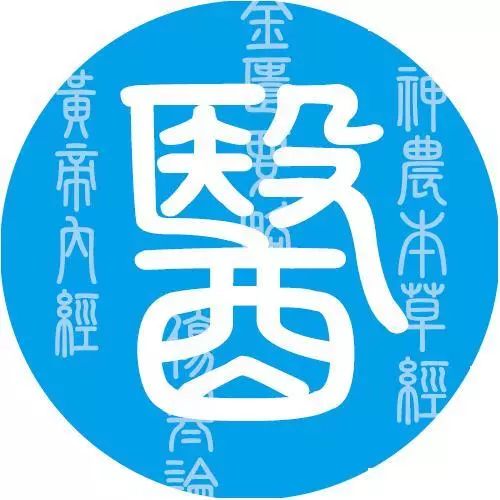
Heavenly Medicine Hall
Gathering place for millions of TCM practitioners
Follow us


The Eight Principles of Diagnosis (Bā Gāng Biànzhèng) categorize various diseases into eight major types: Yin (阴), Yang (阳), Exterior (表), Interior (里), Cold (寒), Heat (热), Deficiency (虚), and Excess (实). This framework serves as the theoretical foundation for syndrome differentiation and treatment. The eight types of diseases are derived from the physician’s analysis of the patient’s four examinations, combined with the patient’s constitution, the severity and nature of the disease, and the depth of the disease location.
Among these eight principles, Yin and Yang reflect the categories of diseases, Exterior and Interior reflect the depth of the disease location, Cold and Heat reflect the nature of the disease, and Deficiency and Excess reflect the balance of pathogenic and righteous Qi. Specifically, the content of the Eight Principles of Diagnosis is as follows:
(1) Exterior and Interior Differentiation
Exterior and Interior are relative concepts that reflect the depth of the disease and its location. Exterior syndrome primarily refers to diseases that are relatively superficial and mild, while Interior syndrome indicates diseases that are deep and severe.
Exterior syndrome refers to symptoms arising when the six excess pathogenic factors invade through the mouth, nose, and skin, often occurring in the early stages of external diseases, characterized by sudden onset and short duration. Clinical manifestations include fever, chills, floating pulse, headache, body aches, nasal congestion, cough, runny nose, and sore throat.
Interior syndrome refers to symptoms that occur when the disease penetrates into the organs, marrow, and Qi and blood, often arising from unresolved exterior syndromes or internal injuries, with a generally longer course of illness. Clinical manifestations include constipation, diarrhea, irritability, dizziness, and deep pulse.
Distinguishing between Exterior and Interior syndromes is generally based on observing changes in cold and heat, pulse, and tongue appearance. Specifically: a floating pulse is often indicative of an Exterior syndrome, while a deep pulse suggests an Interior syndrome; fever with chills is more indicative of an Exterior syndrome, while fever without chills suggests an Interior syndrome; minimal changes in tongue coating are associated with Exterior syndromes, while significant changes indicate Interior syndromes.
(2) Deficiency and Excess Differentiation
Deficiency and Excess reflect the balance of pathogenic Qi. Excess syndrome indicates a predominance of pathogenic Qi that should be attacked; Deficiency syndrome indicates insufficient righteous Qi that should be tonified.
Deficiency syndrome refers to symptoms arising from insufficient righteous Qi within the body, including varying degrees of damage to the organs, Yin, Yang, and essence-blood. Clinical manifestations include pale complexion, fatigue, palpitations, shortness of breath, frequent urination or incontinence, mental fatigue, and night sweats.
Excess syndrome refers to symptoms caused by an overabundance of pathogenic Qi, resulting from invasion of the body or dysfunction of internal organs. Clinical manifestations include coarse breathing, chest tightness, difficulty urinating, constipation, abdominal distension and pain, and thick greasy tongue coating.
Distinguishing between Deficiency and Excess syndromes generally follows these patterns: robust body, old tongue, early to mid-stage of external diseases, loud voice, strong pulse, and pain that resists pressure are often indicative of Excess syndrome; weak body, tender tongue, late stage of external diseases, low voice, weak pulse, and pain that is relieved by pressure suggest Deficiency syndrome.
Deficiency and Excess can also be further divided into true and false. Generally, abdominal distension that fluctuates, or pain that decreases upon pressure, with a wiry pulse indicates true Deficiency and false Excess; while lack of appetite but able to eat, abdominal distension with increased pain upon pressure, and a deep pulse that is strong upon pressure indicate true Excess and false Deficiency.
(3) Yin and Yang Differentiation
Yin and Yang serve as the overarching principles of the Eight Principles. Yin syndromes include Deficiency, Interior, and Cold, while Yang syndromes include Excess, Exterior, and Heat.
Yin syndromes primarily refer to Deficiency Cold syndromes, with clinical manifestations including fatigue, lack of energy, dark complexion, cold intolerance in the limbs, lack of thirst, and clear diarrhea; Yang syndromes primarily refer to Excess Heat syndromes, with clinical manifestations including restlessness, constipation, fever, coarse breathing, and short red urine.
Yin or Yang Deficiency can lead to Yin Deficiency or Yang Deficiency. Clinical manifestations of Yin Deficiency include tidal fever, night sweats, weight loss, low-grade fever, five-center heat, and thin rapid pulse; Yang Deficiency manifests as fatigue, lack of thirst, shortness of breath, and cold intolerance in the limbs.
Yin or Yang Deficiency that progresses to a certain extent can lead to the loss of Yin or Yang, indicating excessive depletion of Yin or Yang Qi, which can be life-threatening. Loss of Yin manifests as warm hands and feet, sticky sweat, hot skin, rapid pulse that is weak upon pressure; Loss of Yang manifests as profuse sweating, cold sweat, coma, and cold intolerance.
(4) Cold and Heat Differentiation
Cold and Heat indicate the nature of the disease. Generally, Yang excess indicates Heat syndrome, while Yin excess indicates Cold syndrome.
Cold syndromes are characterized by cold nature, often accompanied by reduced organ function, with clinical manifestations including pale complexion, loose stools, cold intolerance, and cold limbs; Heat syndromes are characterized by heat nature, often accompanied by excessive organ function, with manifestations including short red urine, flushed face, restlessness, and heat intolerance.
Distinguishing between Cold and Heat syndromes shows different manifestations: aversion to cold with preference for warmth, lack of thirst, pale complexion, and cold limbs indicate Cold syndrome; aversion to heat with preference for cold drinks, thirst, flushed face, and warm limbs indicate Heat syndrome.
Sometimes, the manifestations of Cold and Heat syndromes can be misleading, making them difficult to distinguish. Careful observation is necessary. Generally, thirst with a preference for warm drinks, body heat with a preference for covering, flushed face that appears intermittently, and a large but weak pulse indicate true Cold and false Heat; while cold hands and feet with a deep pulse, cold limbs with body heat that does not aversion to cold, and a deep pulse that is strong upon pressure, along with thirst that prefers cold drinks indicate true Heat and false Cold.
— THE END —
▶ Copyright Statement:
1. Source: Internet, edited by Li Yawen.
2. This platform aims to disseminate knowledge of TCM culture, and the copyright belongs to the relevant rights holders. We respect knowledge and labor; please retain copyright information when reprinting. If there are any improper uses, please feel free to contact us for negotiation. Contact (WeChat): 936532881
3. We welcome submissions; submission email: [email protected]


